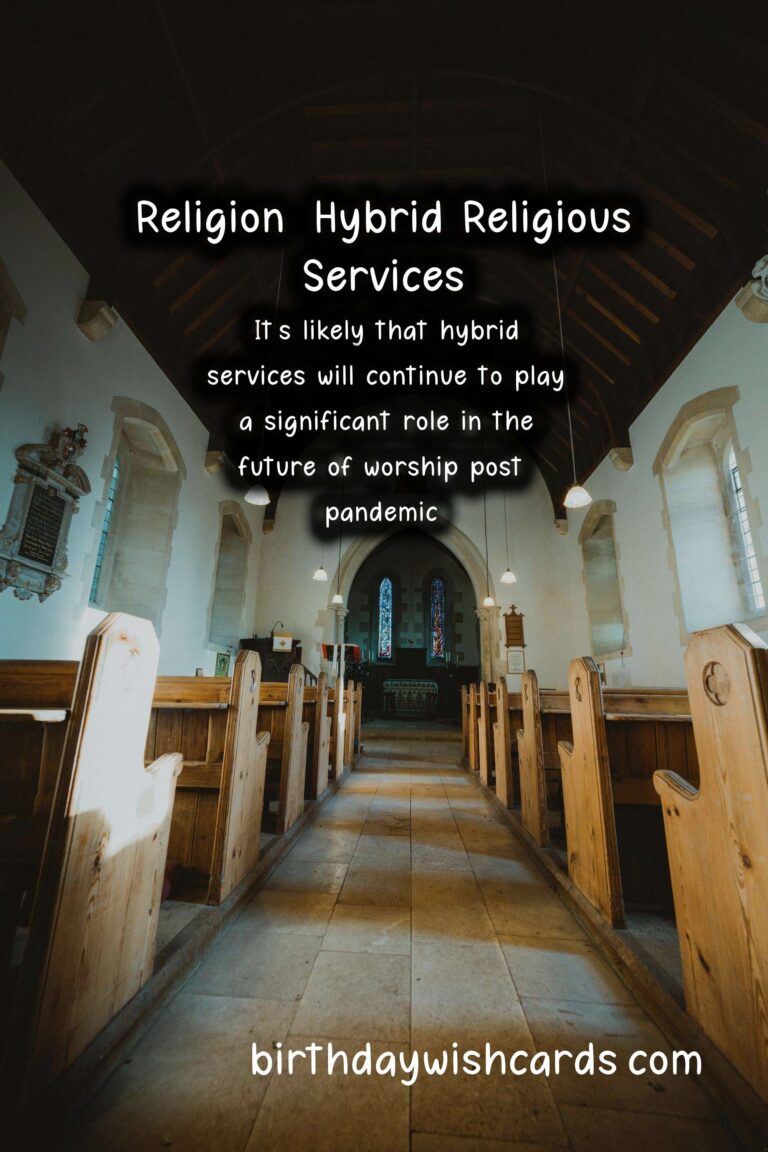
The Impact of Pandemic on Religious Services
The COVID-19 pandemic has affected every aspect of human life, including the way we practice religion. Churches, synagogues, mosques, and temples have all been impacted by lockdowns, social distancing measures, and restrictions on large gatherings. This has led to a fundamental shift in the way religious services are conducted. Before the pandemic, religious services were typically held in a physical location, with worshippers gathering together in a communal setting. However, with the spread of the virus, this traditional form of worship became a high-risk activity. As a result, many religious communities had to adapt and find new ways to continue their practice while keeping their members safe. This is where hybrid religious services come into play.
What are Hybrid Religious Services?
Hybrid religious services combine both virtual and in-person practices, allowing individuals to participate in religious activities from the comfort of their own homes, while also allowing for small in-person gatherings for those comfortable with attending. In the virtual component, religious institutions use platforms such as Zoom, YouTube, or Facebook Live to stream their services live. This allows people to engage in religious practices from any location, at any time. On the other hand, the physical component consists of smaller gatherings, with strict social distancing measures in place to prevent the spread of the virus.
The Benefits of Hybrid Religious Services
Hybrid religious services have many advantages that make them a popular option in the post-pandemic world. First and foremost, they offer a safe alternative for those who are unable or uncomfortable attending in-person services. This includes older adults, people with underlying health conditions, and those living in areas with high infection rates. Additionally, with hybrid services, individuals have the freedom to participate in religious practices at their own convenience. They do not have to travel to a physical location and can instead join from the comfort of their own homes, making it easier for those with mobility or transportation issues to be a part of their religious community. It also provides a way for people to continue attending services while on vacation or traveling for work. Hybrid services also allow for a wider reach, as live streaming and online platforms have the capacity to reach a larger audience than a traditional physical gathering. This can result in more diversity within a religious community and can create a sense of inclusivity for those who may not have been able to attend services in the past.
The Future of Worship
Hybrid religious services have quickly become the new normal for many religious institutions and are likely to continue even post-pandemic. These services offer a middle ground for people who may not be ready to fully return to traditional in-person worship, while also providing a convenient option for those who may prefer virtual services for various reasons. Furthermore, the use of technology in religious services may attract a younger audience, making it easier for religious communities to connect with the next generation. It also opens up opportunities for religious institutions to incorporate newer technologies, such as virtual reality, into their services in the future.
Conclusion
Despite the challenges and difficulties that the pandemic has brought, it has also pushed religious communities to innovate and adapt to changing circumstances. Hybrid religious services offer a safe and convenient option for worshippers, and it’s likely that this format will continue to play a significant role in the future of worship post-pandemic. Hybrid religious services combine virtual and in-person practices. They offer a safe and convenient option for worshippers. It provides a way for people to continue attending services while traveling. The use of technology in religious services may attract a younger audience. Hybrid services may result in more diversity and inclusivity within a religious community. It’s likely that hybrid services will continue to play a significant role in the future of worship post-pandemic.

